About the author: Lina Younes has been working for EPA since 2002 and chairs EPA’s Multilingual Communications Task Force. Prior to joining EPA, she was the Washington bureau chief for two Puerto Rican newspapers and she has worked for several government agencies.
Lea la versión en español a continuación de esta entrada en inglés.
Some links exit EPA or have Spanish content. 
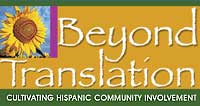 “…Regardless of our heritage, we all have the same interest in a clean, healthy environment. Hispanics, with their deep sense of family and community, can help EPA spread the ethic of environmental stewardship to all segments of our society.” - EPA Administrator Stephen L. Johnson
“…Regardless of our heritage, we all have the same interest in a clean, healthy environment. Hispanics, with their deep sense of family and community, can help EPA spread the ethic of environmental stewardship to all segments of our society.” - EPA Administrator Stephen L. Johnson
Hard work pays off! We successfully hosted our first National Beyond Translation Forum on September 15th. Participation surpassed our expectations. Feedback from the attendees has been very positive.
This event was the first Beyond Translation Forum held at the national level in Washington, DC as a result of the successful initiative originated by employees in Dallas three years ago. EPA Employees in partnership with Hispanic organizations and state representatives came together for this important event.
As the theme of the conference suggests, “EPA and the Hispanic Community: Partnering, Engaging, and Building Awareness,” we’ve learned that our work has just begun. It didn’t end with the event last Monday. Far from it. Currently, we are identifying opportunities in which stakeholders will be able to work together. We plan to collaborate in order to increase environmental awareness on environmental health issues of interest to the Hispanic community as well as potential economic opportunities for Hispanic small business and organizations to work with the Agency.
After the presentations, it was very exciting to see many of the stakeholders come to me and other conference speakers to discuss ways in which we can join forces to build on the momentum generated by this important event. As administrator Stephen L. Johnson said in his speech at the BT Forum in Washington, DC this week, “with the help of the Hispanic community, we will continue our environmental successes.”
The next forum will be held on October 1st at EPA Research Triangle Park, North Carolina. At the EPA-RTP campus, we will be focusing on children’s environmental health.
Once again, thanks to the team members from the EPA Office of Small Business Programs, Office of Cooperative Environmental Management, our Office of Civil Rights, the staff from our program and regional offices, as well as many of the speakers from HHS, NASA, LULAC, AFOP, Hispanic College Fund, LCLAA, and others who gave their all for this event. It was a true labor of love.
Sobre la autor: Lina M. F. Younes ha trabajado en la EPA desde el 2002 y está a cargo del Grupo de Trabajo sobre Comunicaciones Multilingües. Como periodista, dirigió la oficina en Washington de dos periódicos puertorriqueños y ha laborado en varias agencias gubernamentales.
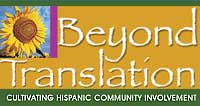 “…Independientmente de nuestro patrimonio cultural, todos tenemos el mismo interés en un medio ambiente limpio y saludable. Los hispanos con su profundo sentir de familia y comunidad pueden ayudar a EPA a difundir los valores de protección medioambiental a todos los segmentos de nuestra sociedad”. - Administrador de EPA Stephen L. Johnson
“…Independientmente de nuestro patrimonio cultural, todos tenemos el mismo interés en un medio ambiente limpio y saludable. Los hispanos con su profundo sentir de familia y comunidad pueden ayudar a EPA a difundir los valores de protección medioambiental a todos los segmentos de nuestra sociedad”. - Administrador de EPA Stephen L. Johnson
¡La ardua labor tiene recompensas! Auspiciamos exitosamente nuestro foro llamado “Más allá de las traducciones” el 15 de septiembre. La participación sobrepasó las expectativas y las reacciones han sido muy positivas.
Este evento fue el primer foro celebrado a nivel nacional en Washington, DC como resultado de una exitosa iniciativa originada por empleados en Dallas, Texas hace tres años atrás. Empleados de EPA en asociación con organizaciones y representantes estatales hispanos se unieron para este importante evento.
Como sugiere el título, “EPA y la comunidad hispana: Creando conciencia mediante colaboración y diálogo”, vemos que nuestra labor tan sólo ha comenzado. No culminó con el evento del pasado lunes. Al contrario, ahora estamos identificando oportunidades mediante el cual las partes interesadas empezarán a trabajar juntas. Esperamos colaborar a fin de fomentar la concienciación medioambiental sobre asuntos de salud ambiental que sean de interés a la comunidad hispana así como potenciales oportunidades económicas para pequeños negocios y organizaciones hispanas que quieren trabajar con la agencia.
Después de las presentaciones, fue excitante ver a muchos participantes acercarse a nosotros para discutir maneras en que podemos aunar fuerzas para seguir el ímpetu generado por este importante evento. Como el administrador Stephen L. Johnson declaró en su discurso en este Foro de Más allá de las traducciones en Washington, DC esta semana, “con la ayuda de la comunidad hispana, continuaremos nuestros éxitos ambientales”.
El próximo foro se celebrará el primero de octubre en las Oficinas del Triángulo de Investigaciones de EPA en Carolina del Norte. Allí nos enfocaremos en la salud ambiental infantil.
Nuevamente, mil gracias al equipo de EPA de la Oficina de Pequeños Negocios, la Oficina de Gestión Cooperativa Ambienta, nuestra Oficina de Derechos Civiles, el personal de nuestras oficinas programáticas y regionales, así como a los oradores de agencias federales y organizaciones como HHS, NASA, LULAC, AFOP, el Hispanic College Fund, LCLAA, y otros que dieron su máximo por este evento. Realmente fue una labor encomiable.
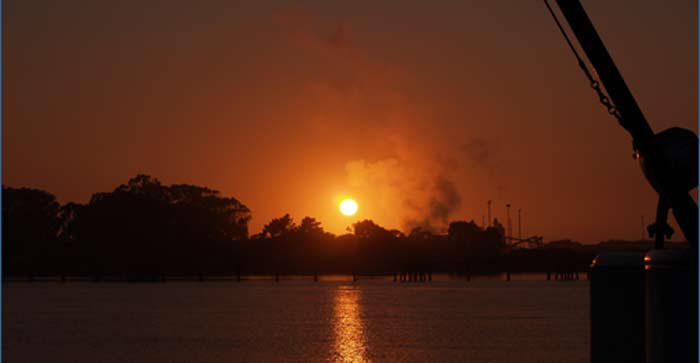

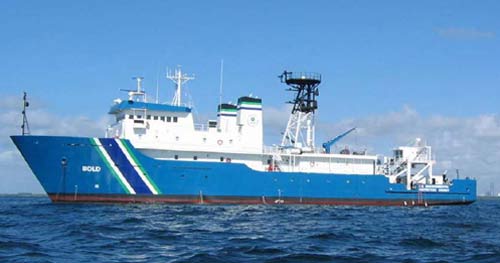
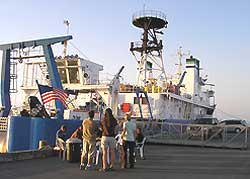 A team of nine scientists descended upon Eureka, California this September and began mobilizing for the upcoming Humboldt Open Ocean Disposal Site (HOODS) survey. HOODS is an ocean disposal site for dredged materials. West coast ports are the gateway to Asia; the Port of Los Angeles alone receives 50% of the nation’s foreign goods. These mega ships need deep ports to come into, which is where dredging and ocean disposal sites come into play. In a nut shell, sites like HOODS receive sands and sediments from local ports that need to move this material to make sure large ships can come into ports. A sediment testing program is in place to make sure that only clean, nontoxic sediments are taken to HOODS.
A team of nine scientists descended upon Eureka, California this September and began mobilizing for the upcoming Humboldt Open Ocean Disposal Site (HOODS) survey. HOODS is an ocean disposal site for dredged materials. West coast ports are the gateway to Asia; the Port of Los Angeles alone receives 50% of the nation’s foreign goods. These mega ships need deep ports to come into, which is where dredging and ocean disposal sites come into play. In a nut shell, sites like HOODS receive sands and sediments from local ports that need to move this material to make sure large ships can come into ports. A sediment testing program is in place to make sure that only clean, nontoxic sediments are taken to HOODS.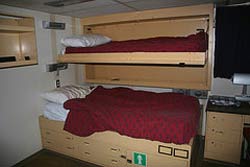 We’ve got nine environmental scientists on this survey with over 5 decades of education combined. Our nine environmental scientists are: Allan Ota, ocean disposal site expert and co-Chief Scientist; Brian Ross, ocean disposal site expert; Amy Wagner, marine biologist; Greg Nagle, chemist; Kevin Ryan, drinking water expert; Tina Yin, watersheds expert; Eugenia McNaughton, Ph.D in algae plankton and quality assurance guru; Carolyn Yale, Ph.D. watershed planner; and Chris McArthur, Chief Scientist from our Atlanta regional office.
We’ve got nine environmental scientists on this survey with over 5 decades of education combined. Our nine environmental scientists are: Allan Ota, ocean disposal site expert and co-Chief Scientist; Brian Ross, ocean disposal site expert; Amy Wagner, marine biologist; Greg Nagle, chemist; Kevin Ryan, drinking water expert; Tina Yin, watersheds expert; Eugenia McNaughton, Ph.D in algae plankton and quality assurance guru; Carolyn Yale, Ph.D. watershed planner; and Chris McArthur, Chief Scientist from our Atlanta regional office. Each week we write about the science behind environmental protection.
Each week we write about the science behind environmental protection. 

 “…Independientmente de nuestro patrimonio cultural, todos tenemos el mismo interés en un medio ambiente limpio y saludable. Los hispanos con su profundo sentir de familia y comunidad pueden ayudar a EPA a difundir los valores de protección medioambiental a todos los segmentos de nuestra sociedad”. - Administrador de EPA Stephen L. Johnson
“…Independientmente de nuestro patrimonio cultural, todos tenemos el mismo interés en un medio ambiente limpio y saludable. Los hispanos con su profundo sentir de familia y comunidad pueden ayudar a EPA a difundir los valores de protección medioambiental a todos los segmentos de nuestra sociedad”. - Administrador de EPA Stephen L. Johnson